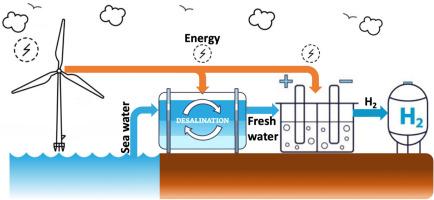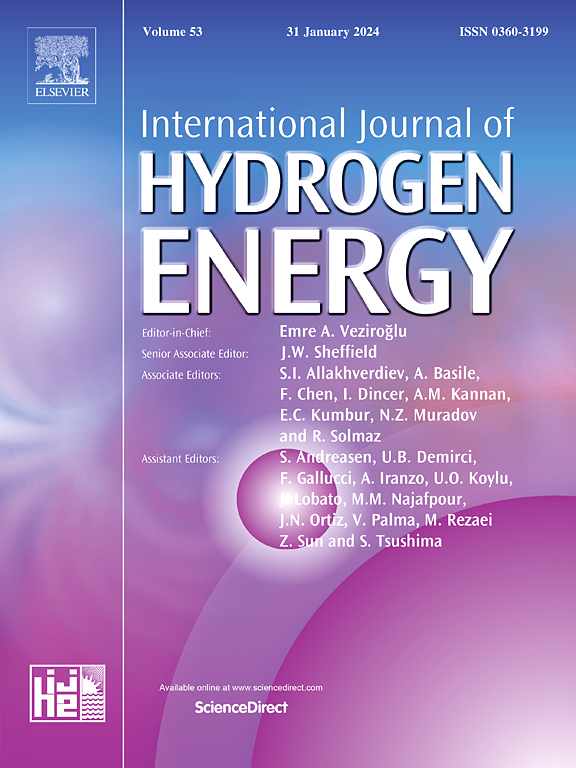Green hydrogen production from offshore wind: A techno-economic analysis for Türkiye
IF 8.1
2区 工程技术
Q1 CHEMISTRY, PHYSICAL
引用次数: 0
Abstract
This study investigates the economic viability of green hydrogen production using offshore wind energy in Türkiye, focusing on four regions: Ayvacık, Bozcaada, Edremit, and Bandırma. A techno-economic model was developed to estimate the levelized cost of hydrogen (LCOH) using 50 MW alkaline and polymer electrolyte membrane (PEM) electrolyzers. Results indicate that Ayvacık, with an LCOH of $4.33/kg H₂ for alkaline electrolysis, is the most cost-effective location, while Bandırma, with the highest production costs, reaches an LCOH of $5.85/kg H₂. Key cost drivers include capacity factor, capital expenditures (CAPEX), and government incentives such as local content support, which lowers Ayvacık's LCOH to $4.13/kg H₂. These findings underscore offshore wind's potential to drive green hydrogen production in Türkiye, although regional factors significantly impact economic feasibility. This analysis highlights the strategic importance of optimal site selection, supportive policies, and technology advancements for expanding Türkiye's green hydrogen industry.

海上风能的绿色制氢:对 rkiye的技术经济分析
本研究调查了 rkiye海上风能绿色制氢的经济可行性,重点关注四个地区:Ayvacık、Bozcaada、Edremit和Bandırma。建立了一个技术经济模型,用于估算使用50 MW碱性和聚合物电解质膜(PEM)电解槽的氢(LCOH)平准化成本。结果表明,Ayvacık是碱电解成本最高的地点,其LCOH为4.33美元/kg H 2,而Bandırma的生产成本最高,其LCOH为5.85美元/kg H 2。主要成本驱动因素包括产能因素、资本支出(CAPEX)和政府激励措施(如本地内容支持),这些措施将Ayvacık的LCOH降至4.13美元/kg H 2。这些发现强调了海上风电推动 rkiye绿色氢气生产的潜力,尽管区域因素对经济可行性有重大影响。该分析强调了优化选址、支持性政策和技术进步对扩大 rkiye的绿色氢产业的战略重要性。
本文章由计算机程序翻译,如有差异,请以英文原文为准。
求助全文
约1分钟内获得全文
求助全文
来源期刊

International Journal of Hydrogen Energy
工程技术-环境科学
CiteScore
13.50
自引率
25.00%
发文量
3502
审稿时长
60 days
期刊介绍:
The objective of the International Journal of Hydrogen Energy is to facilitate the exchange of new ideas, technological advancements, and research findings in the field of Hydrogen Energy among scientists and engineers worldwide. This journal showcases original research, both analytical and experimental, covering various aspects of Hydrogen Energy. These include production, storage, transmission, utilization, enabling technologies, environmental impact, economic considerations, and global perspectives on hydrogen and its carriers such as NH3, CH4, alcohols, etc.
The utilization aspect encompasses various methods such as thermochemical (combustion), photochemical, electrochemical (fuel cells), and nuclear conversion of hydrogen, hydrogen isotopes, and hydrogen carriers into thermal, mechanical, and electrical energies. The applications of these energies can be found in transportation (including aerospace), industrial, commercial, and residential sectors.
 求助内容:
求助内容: 应助结果提醒方式:
应助结果提醒方式:


